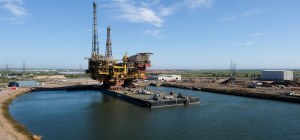12: Energy Security Strategy
On Thursday the UK government finally published its much anticipated Energy Security Strategy, in response to recent soaring energy prices and the ongoing Russian invasion of Ukraine. The Strategy seeks to ‘supercharge’ the roll out of clean energy infrastructure to help the UK reach 95% low carbon electricity by 2030. But, at the same time, the Strategy supports the maximisation of North Sea oil and gas extraction. The document supports the maximisation, it also sets out some more ambitious clean energy deployment targets and also promises changes on consenting issues, to speed up the planning process for offshore wind farms and provide greater policy support for solar schemes. But, the Strategy does not offer much hope for a major deployment of onshore wind projects and tidal schemes, and nor does it provide much comfort to consumers that energy bills will stop rising and that the government is taking action to decarbonise domestic heating. The recently published IPCC report was clear in calling for drastic cuts in fossil fuel consumption, widespread electrification and improved energy efficiency in order to limit global warming to 1.5C above preindustrial levels. So, is the Strategy ambitious enough to put the UK in the best possible position to reach Net Zero by 2050?
Does the Strategy go far enough to support clean energy infrastructure deployment?
References to specific, more ambitious clean energy deployment targets / ambitions – 24GW of civil nuclear by 2050; 50GW of offshore wind by 2030; 70GW of solar (utility scale, domestic & commercial) by 2035; and 10GW of hydrogen – have been widely applauded and should provide funders with further confidence to invest in UK clean energy infrastructure. In fact, the targets exceed the Climate Change Committee’s (CCC) own proposed targets for the main low-carbon technologies! Having 50GW of installed offshore wind capacity by 2030 would be brilliant but, at present, the previous 40GW target is shaky. Why is it shaky? Partially because the government hasn’t made an offshore wind planning decision on time for 7 years. Deployment targets are great, but we need a smorgasbord of regulatory, policy, and funding measures to reach those targets. Thankfully, the Strategy proposes to deal with planning delays to offshore wind projects by:
- cutting planning timeframes from up to four years down to one year – a streamlined planning process for ‘priority cases’ will require amendments to the Planning Act 2008 to allow the Secretary of State to set a shorter examination timetable;
- streamlining of the assessment of projects’ environmental impacts (including implementing strategic compensation environmental mitigation across multiple projects to reduce planning delays, considering environmental effects of multiple schemes at a strategic level, and simplifying Habitats Regulations Assessments from late 2023); and
- revising the Renewable National Policy Statements (NPSs) to reflect the importance of energy security and net zero in delivering offshore wind projects – the revised draft NPSs have already passed through consultation and are expected to be designated later this year, so hopefully any additional ‘energy security’, ‘net zero’ and technology-specific policy strengthening wording (including support for solar development on ‘non-protected’ land) can be slipped in without delaying designation.
The streamlined planning process idea has arisen from the government’s Project Speed initiative (see the November 2020 National Infrastructure Strategy), which the government set up in Summer 2020 with the aim of accelerating and improving the delivery of the UK’s infrastructure portfolio, and a further ambition of reducing planning timescales by up to 50% for certain projects entering the system from September 2023. The Strategy refers to a streamlined process for offshore wind projects, but it would be illogical for it not to apply to other clean energy projects, such as solar, if complexity and environmental effects thresholds are met. Developers and funders require greater certainty that solar, wind and nuclear projects are going to get consented, and consented quickly. If a fast-track DCO consenting process applies to solar projects as well several solar developers may be persuaded to promote much larger solar farms of 150-500 megawatts, which should allow us to reach the 70GW deployed solar ambition ahead of 2035. Having to wait another 17 months for the fast-track DCO process to begin will be hugely frustrating to all those wind farm (and hopefully solar farm) promoters who just want to crack on and start producing clean energy. Other than the reference to a 70GW solar deployment ambition and the policy strengthening to support the approval of ground-mounted solar on non-protected land, there is little else in the Strategy for large scale solar developers to rave about.
Nuclear was given a whole two pages within the Strategy (out of 38), allowing the government to reconfirm its support for low-carbon nuclear projects which it considers are ‘the only form of reliable, low carbon electricity generation which has been proven at scale’. Nuclear power plants currently amount to ~8GW of capacity, generating 15% of the UK’s electricity. By 2050, the government wants 24GW of nuclear which should be supplying ~25% of our electricity based on projected energy demand. On nuclear, the government is also proposing:
- that up to eight more nuclear reactors could be progressed, to be delivered at the equivalent rate of one per year. This includes Small Modular Reactors (SMRs), which are smaller, less complicated and less expensive nuclear reactors relative to conventional nuclear power stations;
- to maintain its support for SMRs, having previously announced £210 million of financial support to help develop SMRs;
- to set up this year a government body called Great British Nuclear to help nuclear projects navigate all stages of the development process;
- to commence the selection process in 2023 for further nuclear projects, before deciding which to financially support; and
- to explore the potential for any streamlining or removing of duplication from the consenting and licensing of new nuclear power stations.
Critics of nuclear continue to argue that nuclear is still too expensive and takes too long to consent and build when compared with solar and wind.
Finally, the government is also betting big on hydrogen and the Strategy doubles the previous hydrogen production capacity ambition, from 5GW to 10GW (with over half being green hydrogen) by 2030. Production capacity at present is close to zero. A Hydrogen Business Model and Net Zero Hydrogen Fund are being established to support the early development of the hydrogen market and to allow it to be scaled up. The government may also decide to permit the blending of natural gas with 20% hydrogen to partially decarbonise our gas grid, but a final decision won’t be made until the end of 2023.
How about other technologies and energy efficiency measures?
Onshore wind is one of the cheapest forms of low-carbon electricity, one of the fastest to deploy and, according to BEIS, is supported by 80% of the British public. However, the Strategy doesn’t propose any material additional support for more onshore wind capacity, including no proposed changes to unfavourable policies within the National Planning Policy Framework. Instead, the government proposes to consult on developing partnerships with a limited number of ‘supportive communities’ who will benefit from guaranteed lower energy bills in return for hosting onshore wind development. If ‘supportive communities’ want to host onshore wind (confirmed by a simple majority online referendum perhaps?) and benefit from lower energy bills why should new onshore wind be restricted to a ‘limited number’? I’m baffled by the perceived disbenefits of wind turbines. We’re facing a war and an imminent climate disaster and some Conservative MPs think Mr and Mrs Miggins are outraged by a minor mechanical hum and an offensive blot on the landscape! In fact restoring onshore wind to its previous status in the planning system would still allow projects to be objected to and refused, but give it more of a fair fight. Personally, I think wind turbines are things of beauty that should be celebrated.
In terms of other technologies, the Strategy pledges to ‘aggressively explore renewable opportunities afforded by our geography and geology, including tidal and geothermal’, but no further details of the proposed aggressive exploration were provided. I’m not sure the ringfenced £20m per year for tidal project ‘contracts for difference’ funding amounts to ‘aggressive’, but there are signs of green shoots for UK tidal projects; the Swansea Blue Eden project is looking to succeed where the Swansea Tidal Lagoon project failed after the government refused to provide financial support back in 2018.
On energy efficiency very few new commitments were announced. The government is doubling its innovation funding to £20 million for the development and piloting of new green finance products for consumers who want to make green home improvements. It is also setting up a £30 million Heat Pump Investment Accelerator Competition to support British-made heat pumps for homes. Energy efficiency measures are widely considered to be the quickest and cheapest way to mitigate the current energy crisis and assist decarbonisation efforts, as it would reduce overall demand for gas, reduce consumers’ bills and cutting the need for fossil fuel imports. But there has been criticism from several quarters with several commentators calling for a more ambitious energy efficiency plan. Mike Thompson of the CCC said on the day of Strategy publication: ‘Recognising the difficulties in implementing effective policy quickly, it is still disappointing not to see more on energy efficiency and on supporting households to make changes that can cut their energy bills now. Government has reiterated its commitment to do more and we look forward to seeing details in the coming months.’
A slippery, oily slope?
The Strategy states that the North Sea Transition Authority is expected to open another licensing round for new North Sea oil and gas projects in this autumn. Ged Barlow, CEO of Net Zero North West, argues that:
- natural gas will be an important transition fuel;
- UK natural gas has a lower carbon footprint than imported gas;
- reaching net zero will require contributions by carbon capture and blue hydrogen (hydrogen produced from gas); and
- additional tax income from UK-produced natural gas could be used to fund the transition.
However, any new oil and gas field production is unlikely to be contributing much to the net zero transition; it takes an average of 28 years for an exploration licence to lead to oil and gas production, so that will be the 2040s or 2050s for the autumn licencing round projects. Further, tax receipts from any new projects won’t be funding the net zero transition, for the same reason. Further, the government has ruled out windfall taxes on North Sea oil and gas companies as, according to Kwasi Kwarteng, it ‘would be a tax on jobs, would destroy investment and would add to the uncertainty in oil markets.’ Other arguments against new oil and gas projects are that they won’t have an impact on energy security in the present or near future; they will have little impact on gas and oil prices (gas and oil are traded on wholesale markets rather than being retained for sole UK use); and they may also divert skilled workers and supply chain away from future clean energy projects. The government also confirmed last week (but it wasn’t mentioned in the Strategy) that it is commissioning a review of the geological science of fracking, reopening the door to the possibility of this controversial gas extraction method.
Gonna get myself connected?
The Strategy acknowledges that ramping up clean energy deployment requires accelerating the connecting network infrastructure to support it. There will be a prioritisation of anticipating the need for connections created by new energy projects and also ensuring that there is ‘hyper-flexbility in the system to match supply and demand and minimise energy wastage. A new ‘Future System Operator’ is going to be set up to oversee Britain’s energy system and the integration of existing networks with new technologies, such as hydrogen. Grid connection constraints are currently one of the greatest issues for clean energy developers to deal with. When it comes to solar developers identifying new sites, close proximity to sufficient grid capacity is criterion number one. All being well the proposed integrated and strategic approach to connections (coupled with investment) will assist; Chris Hewett, CEO of solar trade association Solar Energy UK reckons 50GW of solar deployment by 2030 is possible if grid constraints are sorted out.
Final thoughts and suggestions to Boris
The Strategy was largely welcomed by the Climate Change Committee who considered that the proposals would bring the UK closer to meeting net zero targets. However, more could be done to speed up clean energy infrastructure deployment and, therefore, decarbonisation. A handful of my tiny adjustments to the Strategy’s proposals would be:
- ensure that the fast-track DCO process will apply not just to offshore wind farms, but to all types of project (including solar and nuclear) proceeding via the DCO route;
- become pro-onshore wind and facilitate any ‘supportive communities’ to host onshore wind developments in their back yard and front yard;
- use a tax mechanism of some kind (whether windfall or otherwise) to direct monies from oil and gas extraction development to nascent green technology / energy purposes;
- provide more funding to alleviate grid connection constraints for clean energy generators; and
- approve the use of hydrogen in the gas grid asap, and certainly well before the end of 2023.










